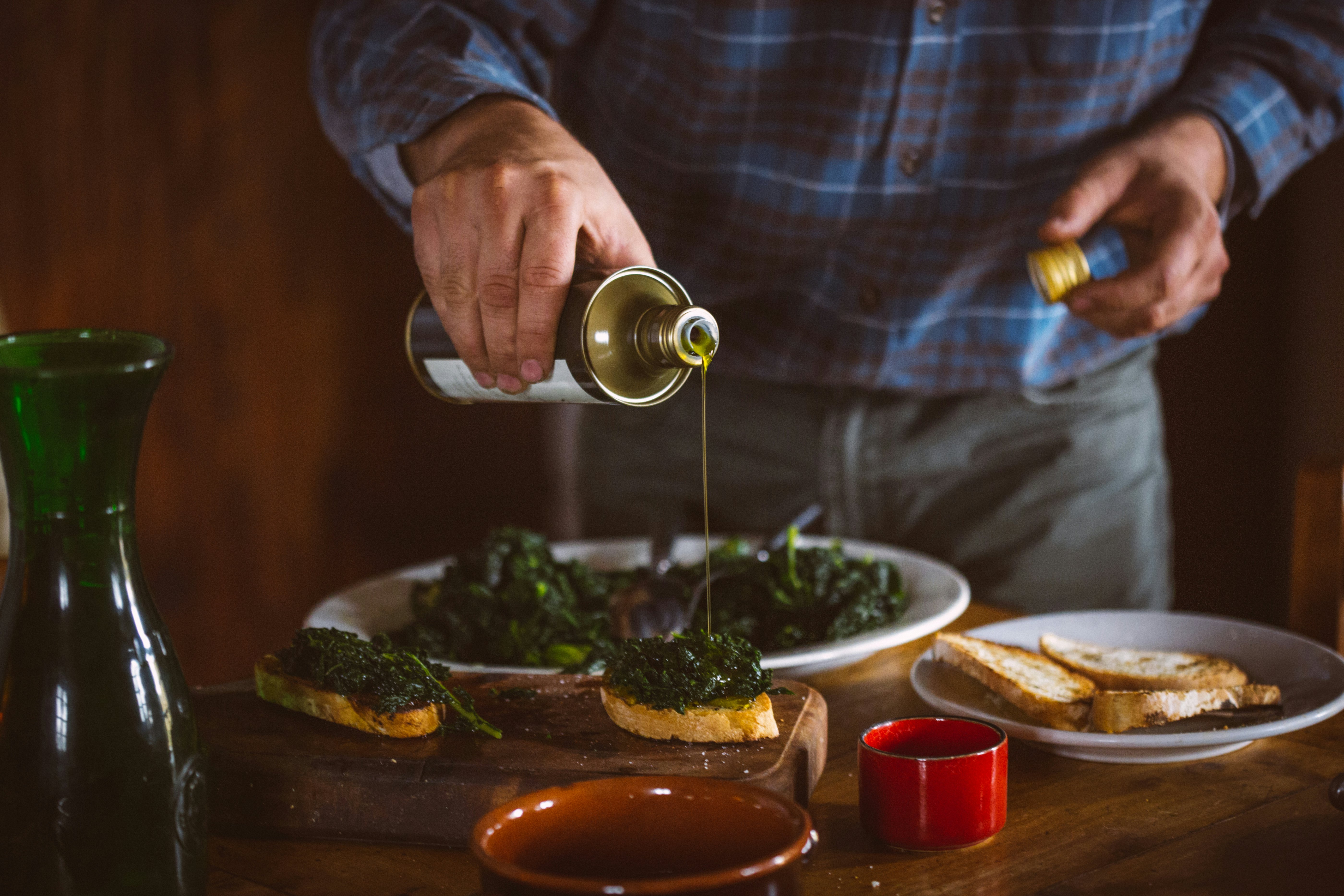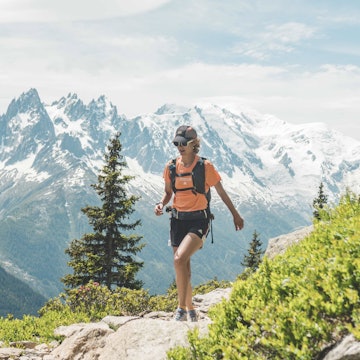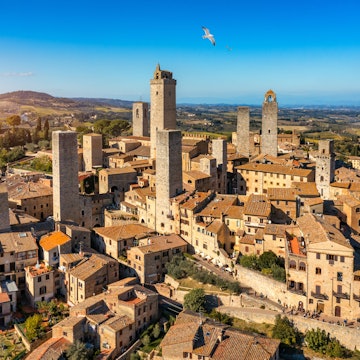

If you're heading to stunning Italy for the first time, read on for our essential tips. Kamira / Shutterstock
Everyone knows Italy – Rome’s iconic ruins, Tuscany’s vine-clad hills, Venice’s romantic waterways. These have all been on traveller's radars for centuries. Add fabulous food and breath-taking scenery, and you have all the ingredients for an unforgettable visit.
But beyond the headline sights, what’s a trip to Italy really like? What’s the best way of getting around? What’s the local etiquette? What should I wear? Here are some practical tips to help you on your way and ensure that your first time in Italy is a truly magical experience.

Eating like an Italian
Whether you’re tucking into hearty farmhouse fare in a Tuscan agriturismo or a wood-fired pizza in a Naples pizzeria, dining out is one of Italy’s great joys.
And there’s no shortage of eateries, with everything from Michelin-starred restaurants to neighbourhood trattorias, wine bars, cafes and pizzerias. Italians generally eat late, so if you want to fit in, stop for lunch at around 1.30pm and dinner at 8.30 to 9pm – the further south you go, the later they eat.
A full Italian meal consists of an antipasto, a primo (usually pasta or risotto), secondo (main course, typically fish or meat), contorno (side dish), and dolce (dessert). You’re not expected to eat all that, so feel free to mix ‘n’ match when ordering. And when you’ve finished, ask for the bill – it won’t be delivered automatically.
If you like this, try this: Piedmont's top dishes and where to try them
Some other pointers: eat spaghetti with a fork, not a spoon. Never eat bread with pasta, though it’s okay to wipe up any leftover sauce with it. Drink wine with pasta and beer with pizzas. It’s fine to eat pizza with your hands.

Bread and tipping
Italians are not big tippers. Service is generally added to restaurant bills, but if it’s not, a euro or two is fine in trattorias and pizzerias, up to 10% in smart restaurants. Also, expect to pay for pane e coperto (a bread and cover charge) – this is standard and is added even if you don’t ask for or eat the bread.
Tipping in bars isn’t necessary but many people leave small change when ordering a coffee.
If you like this, try this: Italy's coolest city: why Naples is the place to be right now

Italy's coffee etiquette
Stopping at a cafe for a quick coffee is one of the great rituals of Italian life. To do it like a local, first pay at the cash register, then, armed with your receipt, give the barista your order. When it arrives, drink standing at the bar – sitting at a table is fine but takes longer and costs more.
The classic Italian caffè is an espresso – though, the term espresso is hardly ever used in Italy. Cappuccinos are popular for breakfast and are often paired with a fresh cornetto (an Italian croissant). They are never drunk later than mid-morning.
When eating in restaurants, un caffè after dessert is okay, but not with your main meal please.

Italy's museums (and how to skip the line)
Italy’s historic cities are littered with awe-inspiring art and famous buildings, and often sightseeing is just a case of walking the streets. But for top sights like the Colosseum and Vatican Museums in Rome or Florence’s Galleria degli Uffizi and Gallerie dell’Accademia, entrance queues are the norm.
There are no fool-proof ways of skipping the line – even with a ticket there are still security checks. But you’ll cut waiting time by booking tickets online. Alternatively, try to arrive first thing in the morning or late afternoon when the queues have died down. In the case of the Vatican Museums, Tuesdays and Thursdays are the quietest days.
Museum opening times vary, but many are closed on Mondays. Also, state museums are free on the first Sunday of each month between October and March.

How to dress the part
Appearances matter in fashion-conscious Italy. That said, you’ll have to dress comfortably for sightseeing because you’ll be walking a lot. Practical shoes are a must as cobblestoned streets play havoc with heels and ankles. For the evening, smart casual is the way to go.
At big religious sites, dress codes are strictly enforced. If you want to get into St Peter’s Basilica or St Marks in Venice, play it safe and cover your knees and shoulders.
Cash or card?
While credit cards are widely accepted in most instances, Italy hasn’t entirely gone plastic. You can’t always rely on cards in museum ticket offices, smaller trattorias (which are often the best ones!), shops and pizzerias.
ATMs (known in Italian as bancomat) are everywhere and most will accept cards tied to the Visa, MasterCard, Cirrus and Maestro systems.
If you like this, try this: Spending diary: what I spent on a four-day trip to Rome

Shopping like a pro in Italy
Traditionally, Italian shops have an afternoon break, typically closing between 1pm and 3.30pm. They’ll then re-open until around 8pm. However, this is changing and in big cities, many shops now stay open throughout the day. Some even open on Sunday mornings.
You’ll find the usual cast of chain stores and designer boutiques in Italy, but more interesting are its many small-label fashion boutiques and artisanal craft shops. A good case in point is Giulio Giannini e Figlio in Florence, where they’ve been making marbled paper since the 19th century.
To stock up on picnic provisions, or just to enjoy some local colour, markets such as Campo de’ Fiori in Rome or Venice’s Mercato di Rialto are an entertaining alternative to supermarkets. Similarly, historic delis like La Baita in Bologna and Milan’s Peck are full of tantalising gourmet goodies.

To drive or not to drive?
It’s pointless hiring a car for city travel – traffic is hellish and ZTLs (limited traffic zones) are in force – but if you want to head into the countryside, it’s worth considering.
Italians tend to drive aggressively but once you’ve got used to the tailgaters and tooting, driving here is not as nerve-wracking as it’s often made out to be. Italy's roads are fine and outside the main urban centres, the scenery is often spectacular.
Often harder than driving is parking. Street parking is denoted by white (free) or blue lines. The latter require a ticket from a coin-operated meter or tabaccaio.

Navigating Italy's public transport
Most Italian cities can be explored on foot, but you’ll inevitably need to use Italy's public transport at some point. Tickets, bought from a tabaccaio (tobacconist's shop) or street kiosk and validated once on board, are generally valid for a set time period. In Rome, for example, a single €1.50 ticket is valid for 100 minutes. During that time you can use as many trams and buses as you like and take one metro journey.
If you’re staying in a city for a number of days, a travel pass will probably save you money. In Venice, a single journey on a vaporetto (water bus) costs an eye-watering €7.50, but various passes are available, starting at €20 for 24 hours.
Brush up on your italiano, mi amore
You’ll have no trouble getting by with English, but a few Italian words and expressions will help you on your way. This is particularly true in restaurants where menus don’t always have translations and some places rely on waiters to explain things.
Some essential phrases:
- Hello Ciao
- Goodbye Arrivederci
- Please Per favore
- Thank you Grazie
- Do you speak English? Parla inglese?
- I’d like to reserve a table for two at eight o’clock Vorrei prenotare un tavolo per due per le otto.
This article was first published November 2016, last updated August 2019.
















